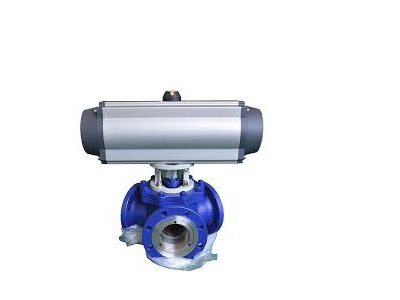What Is The Definition Of Directional Control?
Key Takeaway
Directional control refers to the regulation of the path that fluid or energy follows within a system. In hydraulic and pneumatic systems, it involves the use of directional control valves (DCVs), which manage the flow of fluid by starting, stopping, and changing its direction. These valves are vital for controlling actuators like cylinders, enabling precise movement and operation in various industrial applications.
In motor drive systems, such as those using Direct Torque Control (DTC), directional control manages the direction of motor rotation and the torque it produces by controlling the stator flux. In vehicles, directional control helps maintain the vehicle’s intended path, particularly during understeering or oversteering conditions, ensuring stability and driver safety.
What Does Directional Control Mean in Pneumatics?
In pneumatics, directional control specifically involves managing the direction in which compressed air flows within a system. By directing airflow to the appropriate ports or components, it controls the movement of pneumatic actuators, cylinders, or valves. Directional control ensures that air is directed to the correct part of the system to perform tasks such as extending or retracting a cylinder, rotating a part, or activating an actuator. It’s essential for regulating the flow of air in applications requiring precise movement.

The Role of Directional Control in Fluid Systems
In fluid systems, directional control is crucial for directing the flow of fluids where needed. It helps in:
Controlling Movement: Ensuring that systems such as hydraulic presses or pneumatic actuators move in the desired direction.
Pressure Regulation: Directing fluid flow to maintain system pressure and avoid over-pressurization.
Flow Path Switching: Enabling fluid to switch between different pathways for tasks such as retraction or extension in cylinders.
Overall, directional control maintains the functional integrity and precision of fluid-powered systems.
Key Components Involved in Directional Control
Key components of directional control include:
Valves: The primary elements that control the direction of fluid flow. They can be manually or automatically operated.
Actuators: Devices that convert fluid flow into mechanical motion, such as cylinders or motors.
Sensors: Used to detect the position of valves or actuators to ensure correct operation.
Solenoids: Electromagnetic devices that control valve movement in automated systems.
These components work together to ensure the proper direction and regulation of fluid in pneumatic systems.
Types of Valves Used for Directional Control
Several types of directional control valves are commonly used in pneumatic systems, including:
2/2 Valves: Control the flow of air in two directions, often used for simple on/off control.
3/2 Valves: Allow the flow of air in three possible paths and positions, typically for controlling single-acting cylinders.
4/2 and 5/2 Valves: Provide more complex control, often used for double-acting cylinders, allowing multiple flow paths.
Each type offers different features and is selected based on the system’s requirements for fluid direction and control.
Importance of Directional Control in Industrial Automation
Directional control is a key element in industrial automation as it helps manage the precise movement of components within automated systems. It ensures that fluid-powered machinery operates efficiently, reducing the risk of system failure and improving the precision of operations. By controlling the flow of compressed air, directional control helps maintain consistent performance, enhances productivity, and optimizes system reliability in a range of applications, including manufacturing, robotics, and material handling.
Conclusion
Directional control is essential for efficiently managing fluid flow in pneumatic systems. It regulates the movement of air, ensuring that components perform their intended functions accurately and reliably. With the right types of valves and components, directional control plays a critical role in enhancing the performance and efficiency of fluid-powered industrial automation systems.

